
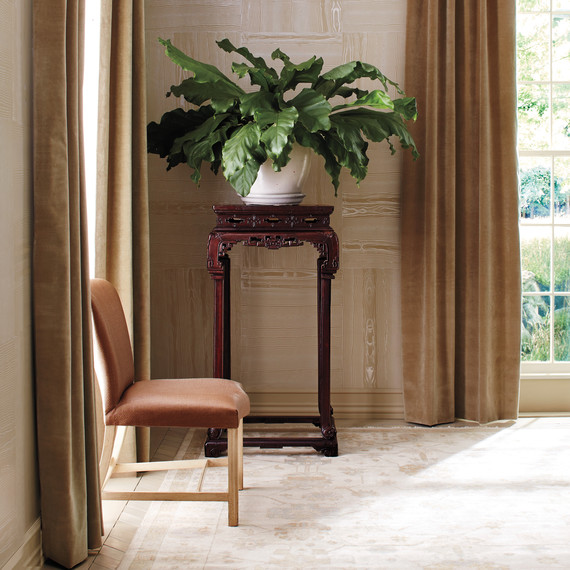
Photography by: Ryan Liebe
The Piece
MSL decorating director Kevin Sharkey’s chinoiserie plant stand is a prime example of Chinese export furniture, typically crafted of rosewood or a similar hardwood species. You often see such pieces in a very dry, very gray state, with intricate, dirt-caked carving.
The Fix
The goal wasn’t to reinvent this plant stand so much as clean and nurture the time-worn wood. The piece shouldn’t look crisp and new; a patina and a little dirt lend authenticity to the finish.
Chippendale side chair, rosetarlow.com
Oushak wool rug, in Ivory and Blue, safavieh.com
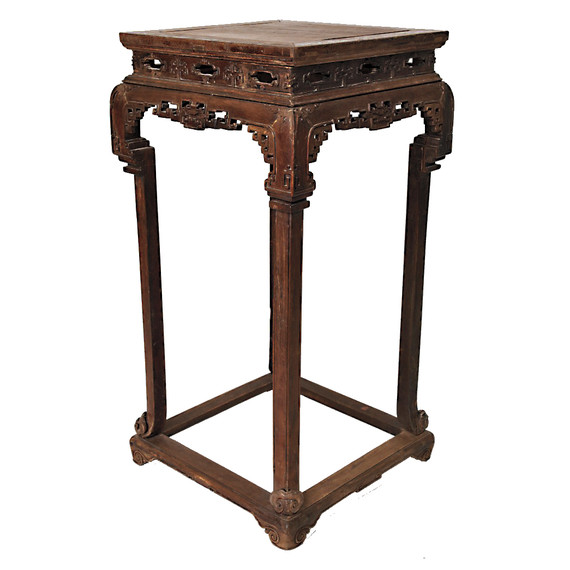
Photography by: JAMES MARCUS-WADE
The Technique
Tung-oil quench
The Process
The quench technique works perfectly with tung oil, which was made specifically for this genre of furniture. Hardwood takes oil so beautifully; the inherent color, depth, and richness shine through almost immediately.
The Materials
+ Glass bowl
+ Tung oil
+ Pure gum turpentine
+ One-quart container
+ Hot water
+ Superfine steel wool (0000) and/or an old toothbrush
+ 100 percent–cotton rags
+ Pigmented wax (optional)
TIP
Old refectory tables, oak paneling, and even floors can be refreshed this way. Just be sure there’s not a modern varnish that would prevent the piece from absorbing the oil.
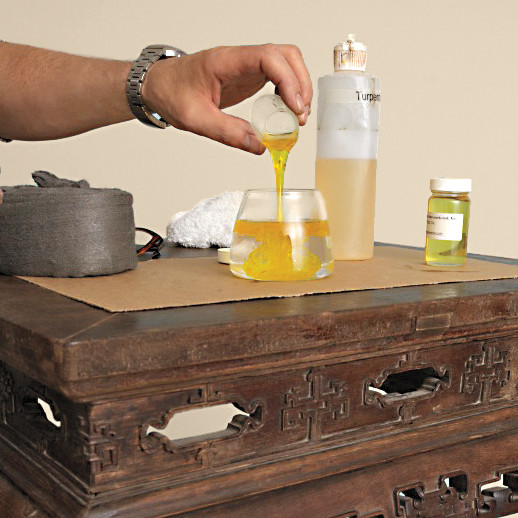
Photography by: JAMES MARCUS-WADE
1. Prepare the tung-oil solution. In the glass bowl, add two parts tung oil to one part turpentine. The turpentine dissolves and cleans dirt, while the oil acts as a rubbing agent to prevent scratching, and both nourish and finish the wood.
2. Fill the container halfway with hot water. The water should be hot but not boiling.
3. Add the oil-turpentine solution. Pour the mixture into the container. Since oil and water don’t mix, the product stays on top. The hot water below warms the solution, making it work more effectively. (The point being, of course, that you should never, ever heat oils and solvents directly!)
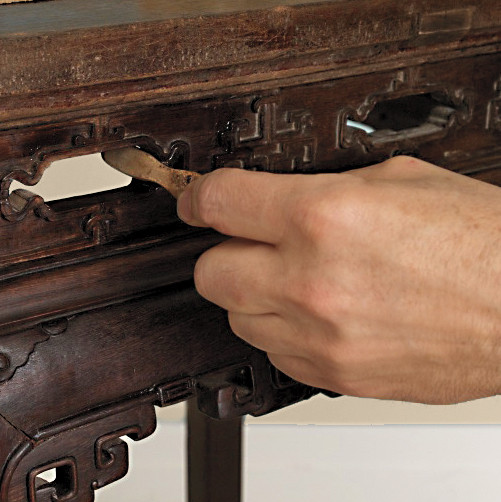
Photography by: JAMES MARCUS-WADE
4. Scrub the piece thoroughly. Dip the steel wool or toothbrush into the solution and begin scrubbing, trying to get into every nook and cranny. As you clean, the oil treats and finishes the wood.
5. Proceed section by section. Rub each section dry with a clean rag as you go.
6. Repeat the entire process until your drying rag comes away clean. Depending on its condition, your piece may require one or two more passes. (Don’t worry—the process goes quickly; a huge piece like this takes only an hour or so from start to finish.) Let it dry overnight.
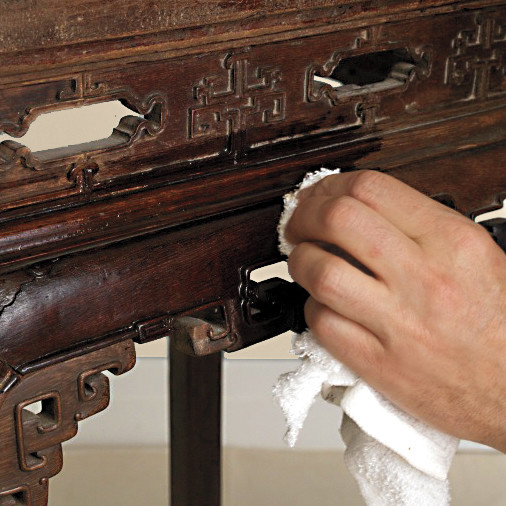
Photography by: JAMES MARCUS-WADE
7. Apply tung oil. With a brush, apply a coat, let it sink in for five minutes, then wipe away the excess oil. Let it dry and repeat once if you wish to enhance the shine. Wait overnight for the oil to penetrate.
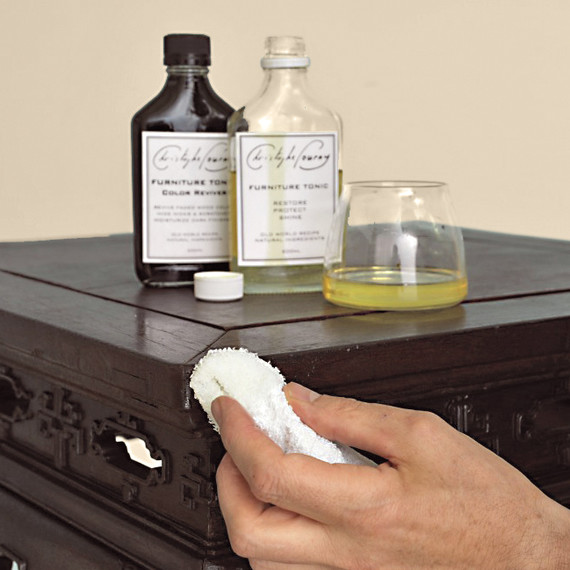
Photography by: JAMES MARCUS-WADE
8. (optional) Treat your piece to a coat of wax. It will accentuate the depth of color, the level of protection, and the degree of shine. For darker woods, use walnut-colored wax; for lighter woods, use amber-colored instead.
Why Oil?
An oil finish has a natural look that you don’t get with a modern varnish coating. It comes across as part of the wood. The glow is more satin and the buildup not very thick. Tung oil is particularly great because it’s inherently water-resistant and dries more quickly than other oils.
Excerpted from The Furniture Bible (Artisan, 2014) by Christophe Pourny.
SOURCE:http://www.marthastewart.com/1110256/refreshing-antique-stand